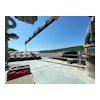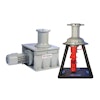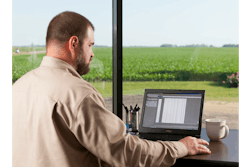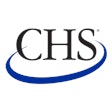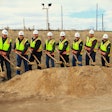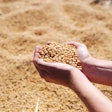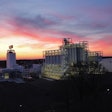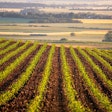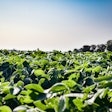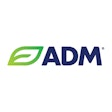Everyone in the agricultural business is well aware of the significant damage a product recall can have on all the companies involved. It is bad for the customers, bad for the partners, bad for publicity and certainly bad for the bottom line. Experts follow best practice rules to help lower the risk of recalls but for many, one slip up can be devastating to the business.
Yet despite this risk, many feed and grain operators are still running basic, outdated technology. It’s no secret that the agriculture industry has been slow to adopt emerging technologies, but that could be changing. Today’s feed and grain software can better track and trace products, helping users hone in, isolate and eliminate a contamination or spoilage issue.
And when it comes to reducing the risk of recalls, tracking and tracing is really the key differentiator. With so many products being stored, mixed, shipped, and delivered in a given day, keeping track of each lot’s production path manually is nearly impossible. That’s where today’s technologies are changing the industry. Software can effectively mimic your production system, meaning it can follow products or ingredients through every stop of your operation.
Let’s say a grain handler needs to track the quality of a product. When the grain comes in, it can be assigned a lot number in the system that captures its basic information and quality (size, weight, moisture, etc.) Which attributes are recorded can be inputted and edited at any time by the user. Labels can be printed to note this data and the lot can be assigned to a storage area, silo 1 for example. When that grain is drawn from storage and mixed in the plant, software has the ability to note the ingredients, say 50 kilos from lot 1 and 60 kilos from lot 2. The combined mixture then gets a separate lot number of its own. When bagged for shipping, you can choose to assign another new lot number or continue using the mixed number. The point it, every step is of the process is now imbedded in the system and able to be searched at any time.
This type of meticulous tracking is essential to limiting the damage of a recall. Even if the product has already hit the market, a “backward trace” can tell the users exactly what went wrong and when. Say there is a problem with a particular bag of feed. Tracing technology will allow you to simply type the lot number in the system and find out everything you need to know about the contaminated feed, including who provided it, what the quality records showed that day, where it was stored and what other ingredients it was mixed with.
From there, you can forward trace the questionable ingredients to find out what other bags might be affected. This will allow you to recall only those specific bags rather than forcing a massive recall just to be safe. In addition, you can address the problem with the specific ingredients supplier to make sure it doesn’t happen again. All this with a few simple clicks. Considering there have been numerous occasions that recalls have put companies out of business, technology can literally be a life saver in situations like this.
Of course, this type of tracking is not only useful for reacting to a recall. It can also be proactive, helping prevent a recall in the first place.
For example, if a quality problem is found when a product is still in the plant, tracking technology can quickly tell managers which mixes and which bags are affected. Those can quickly be pulled with no fear of letting an imperfect product get to shipping.
Barcodes can be especially useful in this process. Today’s technology allows manufacturers to choose which barcode information they need most. Data like production date, shipping data, ingredients used, and expiration dates can all be implemented into the barcode and pulled from a bag with one simple scan.
Perhaps most impressive about today’s technology however is that it can warn you when those expiration dates are upcoming. Users can mandate when feed or grain needs to be used as soon as possible or when it can no longer be used at all. For example, every Monday the system may send a notice of which lots will expire in the next month. Employees can then make sure those are used in time so that the product remains safe yet no supply is wasted or thrown away. When the expiration date does comes, an alert can be sent to the computer system or even a mobile phone to make sure everyone is aware which product not to use.
Many plants use soft and hard deadlines with this type of technology. When a hard deadline passes, the system will literally not allow you to use an expired lot, ensuring no bad product can hit the market. With soft deadlines, the system may warn you about the ingredient quality but allow usage for a certain period of time.
Basically, tracking technology is changing the feed and grain game. To this day we still see some users tracking products on pieces of paper. To put it simply, technology has come too far for industry veterans to rely on the tedious, often unreliable, manual tracking system. While there certainly will be some upfront costs, implementing tracking technology pays for itself in the long run. The time saved will be a relief. The recall saved could be a life-saver.
Edit Note: Meetesh Shah serves as President of iRely LCC, a leading provider of commodity software solutions. He previously served as CIO of a multi-national food and beverage company and has over 15 years experience in food and agricultural IT systems.
